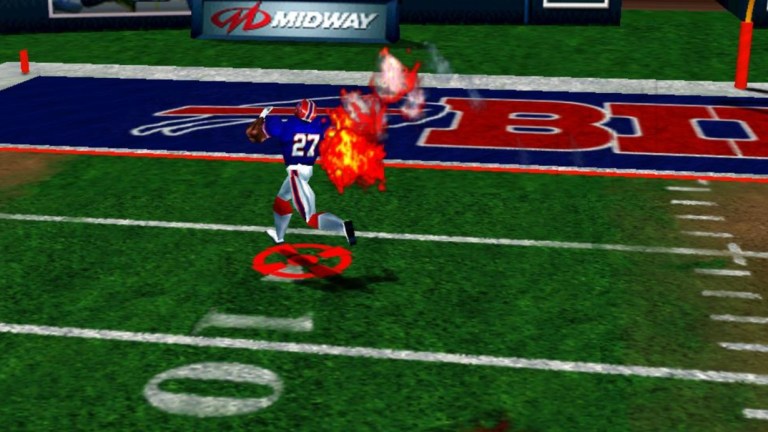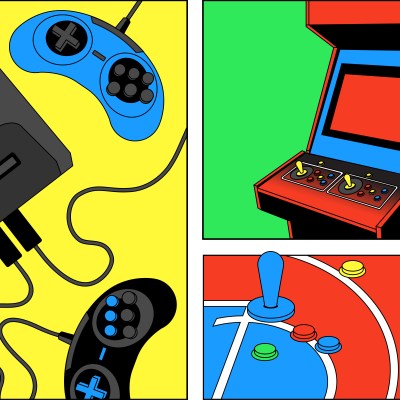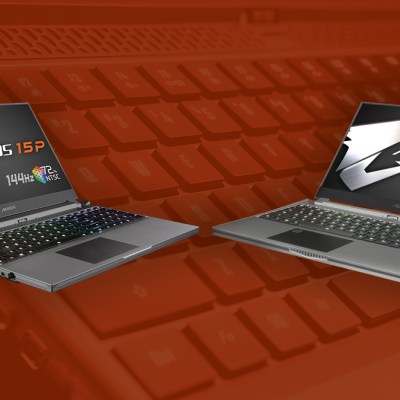How NFL Blitz Became the Best Arcade Football Game Ever Made
The NFL thought Midway's NFL Blitz was "too violent," yet it's one of the best football games ever made. Mark Turmell and Tim Kitzrow take us through the making of the game.

Football is violent and fast. Brutal injuries are inherent to the action when 300-pound bodies slam into one another like cars at a demolition derby. In the late 1990s, no video game simulated that feeling more than the most anti-sim football game ever made: NFL Blitz.
Unfortunately, the world may never see a game like Blitz again. To be sure, football video games are as popular as ever—or at least EA Sports’ Madden franchise is, since it’s the only football sim officially licensed by the NFL. Spiritual successors to the Blitz brand of arcade-style football have come along here and there, with EA’s former NFL Street franchise and the 2017 reinvention of Mutant Football League by Digital Dreams Entertainment the most noteworthy. Even 2K Games plan to return with an NFL-licensed non-sim in the near future, and Madden NFL 21 has a new backyard-football mode called The Yard. But the marriage between the NFL and such over-the-top gridiron action as the original Blitz titles from Midway Games may have been unique to its time.
Two decades ago, arcade cabinets were still a lucrative proposition. Thanks to the arrival of Midway’s iconic NBA Jam in 1993, sports games in particular could be major money makers. NBA Jam raked in $1 billion in quarters during its first year. That’s billion with a ‘B,’ and it’s a figure even the game’s iconic announcer, Tim Kitzrow, still has trouble wrapping his head around.
“I happened to see an article that was posted on the bulletin board in the cafeteria. It said ‘NBA Jam breaks all records. Makes $1 billion in revenue this year,’” Kitzrow tells Den of Geek. “I just, I laughed and thought it was one of the guys with a sense of humor in the office who had typed that up as kind of a joke. I still can’t believe it. No one could believe a billion dollars [in] a year.”
Mark Turmell, creative director of NBA Jam, says that he and his team certainly enjoyed the fruits of their labor after the game’s success. With a team that included lead artist and game designer Sal DiVita, Turmell noted they were all “pretty young” and bought cars and “did silly things,” but that there was little room to rest on their laurels before working on the next game. With a steady stream of hits like the Mortal Kombat and Jam games, “we kind of kept our nose to the grindstone.”
Indeed, Midway Games enjoyed a golden age in the ‘90s. However, up until the team took up the project that would become NFL Blitz, their games existed in only two dimensions. But the gaming landscape was changing. Three-dimensional arcade games were nothing new by 1997, when Blitz released, and they were proliferating the market at a rapid pace. That was especially true of the home console market, with both the Sony PlayStation and Nintendo 64 becoming the dominant players in that space.
The opportunity to work in 3D was new and exciting for Turmell, who noted the “hardware that could actually put enough stuff on the screen to get away with 3D, the horsepower” had arrived.
“If you look at the NFL Blitz models, the players, it’s only a few hundred polygons,” he added. “Kind of rectangular arms, biceps and more of a square-ish head and so forth. There was not a lot of resolution or detail, but it was still, the hardware was strong enough to run at 60 frames a second, which is just a necessity on really any game.”
Leaning into the Action
With the hardware and programming capabilities in place, that allowed the lifelong Detroit Lions fan the chance to create a Midway-style game for his favorite sport. That meant making some big changes to the gridiron game, most notably cutting the number of men on the field for each team from 11 to seven. The number of players wasn’t just chosen at random.
“We knew we wanted to focus on offense, so with the quarterback, a couple of wide receivers, a running back, that burned four characters there,” Turmell said, “and to have only one guy as a lineman or two, you really needed three for somebody to hike the ball and be at the line there. Three linemen was the thing that eventually dictated doing seven-on-seven.”
To juice the speed of games and keep things moving at arcades, quarter length was dropped to two minutes, and time ticked down at an accelerated rate — start to finish, a game of Blitz lasts about 12 minutes. Teams would need to advance 30 yards for a first down, a huge jump from the standard 10 yards. Extra points were (usually) automatic with the press of a button.
Oh, and no penalties. No pass interference. No holding. You want to tackle the receiver before the ball comes his way? Totally legal. As were Hulk Hogan-style leg drops after play was whistled dead. All of the motion capture for these moves was done by DiVita, a veteran of mo-cap who portrayed several Mortal Kombat characters, such as Nightwolf and Cyrax.
“It was kind of a new era, and because of the success of [NBA Jam] and the NBA connection, then the NFL was just a total natural to essentially try to do the same thing. Catch on fire, break the rules, a subset of the rules, multiple behind the line of scrimmage passes, those kind of little rule changes we did.”
As with NBA Jam, Midway brought back Kitzrow, a midwestern comedian and Second City alum, to lend his voice to the on-field action. Unlike with the two-on-two hoops classic, NFL Blitz was the first game he had worked on in which he contributed to the writing. Improved technology also meant the ability to include more speech than in NBA Jam. Rather than one- or two-word sound bytes, Kitzrow could mix more comedy in. Among his favorites: “He just ripped his head off! No, it was just his helmet. Darn it.”
“Tim’s amazing,” Turmell says. “His energy, his ad lib ability. He just totally nailed it on Jam, and then nailed it on Blitz, as well. He was the only guy we called.”
When the time was right, Midway initiated talks with the NFL to get the official go-ahead. They built a demo, telling the NFL that they were aiming for a “quicker-hitting [game], not a deep simulation,” according to Turmell.
“They were of course familiar with the consumer games of that era, and Madden football, where it was more of an 11-on-11, the simulation, the stats,” Turmell said. “We were trying to lean into the action, the arcade, the fast-paced gameplay, that I think the NFL felt like, ‘Okay, that can actually open up a larger fan base.’”
“Too Violent”
Thus, development of NFL Blitz began, largely without interaction between the league and the development team. As was common for the time with arcade cabinets, Midway was already testing the game for profitability at select arcades, and with about a week before final sign off, the NFL rolled into Midway’s headquarters in Chicago to see what Blitz looked like.
It didn’t go well.
“We played the game for them. We showed them the game, and they said, ‘Can you excuse us for a moment?’” Turmell said. “We left them in an office alone. About 15 minutes later, they came out, and they said, ‘We have to wash our hands of this product, and we’re going to give you your money back, and we can’t go forward with this product. It’s just too violent.’”
When Turmell asked what elements of the game crossed the line, the league reps indicated a few animations in particular, which would trigger during the small window after plays were whistled dead and players could pile on with elbow drops and other over-the-top hits.
“I had one where you could pick the player up by the face mask and shake him,” Turmell said. “I had a kick where you could actually kick the player when he was down, and then I had a tackle that was more of, like, a piledriver. You’d kind of grab the guy from behind, jump up in the air, and flip him backwards, so his head hits into the ground.”
Den of Geek reached out to the NFL to hear its side of the story but the league did not respond to questions regarding NFL Blitz in time for publication.
With their work in jeopardy, Turmell regrouped with Midway Games chief executive officer Neil Nicastro. Turmell came up with a new plan: to remove the “offending animations” and test the game on location.
“If it still earns the money that it was earning already on [the] test, then we will know that it’s not about the violence,” Turmell told the league reps.
The plan worked. The NFL agreed to the proposal, and NFL Blitz earned the same revenue during the test as it had before the animations were excised. After cabinets were released in the fall of 1997, it became another smash arcade hit for Midway. Turmell estimates the game raked in about $650 million in its first year, very impressive for a two-player game which cost 50 cents per quarter of play, per person. That placed it around the top three of games at the time, he said.
Blitzing Consoles
With a mountain of quarters in their pockets, Midway Games successfully ported NFL Blitz to both Sony and Nintendo consoles in September 1998, as well as PC the following month. According to NPD Group’s TRSTS Video Game Service, which tracks total units sold as reported by major retailers, Blitz was the top new N64 game and the No. 3 new game on PS1 for September.
The tagline in ads for the console launch summed up NFL Blitz pretty accurately: “No refs. No rules. No mercy.” Commercials visually drove home the over-the-top violent hits the game allowed. In perhaps the most infamous 30-second TV spot, then-Pittsburgh Steelers quarterback Kordell Stewart works on his throws alongside a coach. Within seconds, we see that Stewart is targeting members of the marching band whose music can be heard in the background of the workout. The ad inspired outrage from music educators.
Turmell, who says he loved the ad, pointed out that the league gave the okay to run the spot. But, after the negative response, the ad was removed from the airwaves. Fortunately, like so many old commercials, it still lives on YouTube:
As far as the game itself, NFL Blitz was a faithful port of the arcade hit, especially on the N64. On the Nintendo console, all the fun of playing a quick and irreverent game of football at the arcade came home. The graphics were virtually identical, unlike what the visually-inferior 32-bit PlayStation could produce. And the game’s most fascinating feature could only be found on N64: an easy-to-use Play Editor which allowed players to create custom alignments. These plays could even be brought to the arcade on an N64 Controller Pak to be used on the sequel, NFL Blitz 99, plugged directly into the cabinet. Cutting edge stuff for the late ’90s, to be sure.
In what may come as a surprise from the creator of the revered NBA Jam, Turmell actually points to the arcade’s Blitz 99, released in fall 1998, as “the favorite game that I’ve developed, and it’s because of the tuning on the plays, the interesting things that can happen.”
“There’s a running push that we introduced with that game, and the original NFL Blitz, when you would do a push, you would stop and do it from a stationary position,” Turmell explains. “Blitz 99 did this running push, just the tuning on the dives, the entertainment value of the tackles, the variety of a tipped pass, a doinked pass, a fumble that goes up in the air, people diving for it. Dancing as they’re running down the last 20 years to the end zone, somebody comes up from behind. You could play that game today and it holds up, and you would say, ‘Wow, I’ve never seen that happen before,’ or you’d find moments to scream, and it’s competitive, it’s tight. It was quite a tuning fest. We really tuned it well, because we’d just play it nonstop.”
By this point, the NFL had really gotten squeamish about the game’s violence, particularly the late hits. The league told Turmell that Midway could still put out Blitz 99, but late hits had to go. Hoping to preserve what he referred to as “a cornerstone of the product,” Turmell got the NFL on board with a workaround.
“I said, ‘What if we did a secret code that gave the player a one second window to do a late hit?’ Just like what happens for real in the NFL. Players have that fractional moment where they do a dive, they do a tackle, where they’re a little bit late. They might get penalized for it, maybe not,” Turmell recalled. “And so they said, ‘Okay, if you put it in a secret code, then you can continue for that very small window of time.’”
The late hits code was simple to input: Just one press of the jump button and up on the control stick during pre-game loading activated the feature.
“The game basically continued to allow late hits, and we put a little message up that said, ‘Late hits activated,’” Turmell said. “I think the NFL was not happy that their concern over late hits didn’t really change.”
“Strategic Mistakes”
NFL Blitz 2000 Gold Edition became the final arcade release, the third consecutive year with a new cabinet. Turmell referred to the annual release schedule as “part of our strategic mistakes.” It was not an unexpected result, but Midway aimed to counteract it with its other sports titles.
“We knew it would be an issue, and we tried to start with our different sports titles to alternate years, go fresh, NBA Showtime, and go to the MLB Slugfest, do the baseball game. We had a soccer game called RedCard Soccer that we were working on. We wanted to have a portfolio of what we called over-the-top sports games that we could alternate. That’s tough to do, as well, developing so many products, consumer marketplaces changing, coin-op is drying up.”
But Blitz soldiered on, with yearly releases neither raved about nor widely panned by players and critics. NFL Blitz 20-02 and Blitz 20-03 saw the series jump to the PlayStation 2, Xbox, and GameCube console generation, leaving the dying arcade market behind.
Eventually, pressure from the ironically violence-averse NFL prompted major changes to NFL Blitz. A year after Blitz 20-03, Midway released NFL Blitz Pro in October 2003, which abandoned the series’ trademark arcade-style play for an 11-on-11 football semi-sim setup. By this point, Turmell had shifted away from the franchise and was working on the streetball-styled NBA Ballers.
“The NFL started to threaten not renewing the license, and so we kind of backpedaled and said, ‘We’re going to compete on the sim front and start to push into that direction,’” Turmell says. “It was going to take, no doubt, a number of years to get robust, but it was kind of the first foray into trying to come up with a product, a series that you could actually continually develop like you continually develop the NFL Madden-style product.”
In January 2005, the NFL gave Electronic Arts the exclusive rights to use the official teams and players anyway, leaving Blitz without NFL support altogether after already selling its over-the-top gridiron soul. Now, Midway was free to do as it pleased with the gameplay and leaned heavily into violence and the darker side of the sport with Blitz: The League.
Hall of Famer Lawrence Taylor, whose career and post-football life has been rife with controversy and trouble with the law, lent his likeness and voice to the game, which released in October 2005 and became the first football game to be rated Mature by the ESRB. Driven by a salacious campaign mode that included gambling, drugs, and prostitutes, the unlicensed football game was still received about as well as the most recent arcade-style NFL Blitz games. A sequel, Blitz: The League II, followed three years later for Xbox 360 and PlayStation 3 to a more mixed reception.
Behind the scenes, however, Midway Games was crumbling at the foundation. Turmell points to the 2003 appointment of David Zucker as president and CEO, replacing Nicastro, as a turning point. He identified game partnerships with Snoop Dogg and Shaquille O’Neal under Zucker’s watch as costly errors.
“It was pretty clear, once they started making these big financial mistakes, that we had the wrong guy in charge,” Turmell says.
In February 2009, Midway Games filed for Chapter 11 bankruptcy protection, ending the run of one of the most notable game development houses of the ’90s.
Back on the Field
With the remains of Midway scattered to various major games publishers, it was EA who acquired the rights to all of the sports games, including NBA Jam and NFL Blitz. Turmell was offered the chance to join EA Sports in Orlando to relaunch the Jam and Blitz franchises.
“The fact that [the games’ rights] were available and Midway was going through bankruptcy, it probably just made sense, from EA’s standpoint, to gather up those properties, anyway,” Turmell said, “but I think that me being involved was good icing on the cake.”
Turmell described his role with the 2010 edition of NBA Jam as more of a consultant for the EA Vancouver team. With NFL Blitz, he was more hands-on in its development as creative director. Looking back on his time working on the game, he marvels at the well-oiled EA machine that produced the game.
“EA is amazing,” Turmell said. “They are very disciplined, because these sports games do come out on a 12-month cycle, so they’re very production-oriented, very organized. The engineers and the artists know exactly what they have to do in each sprint, in each period of time to launch the product.”
But Turmell’s time with EA was short, as he accepted his current role as the creative director at mobile game developer Zynga. In fact, he left less than two months before Blitz released in January 2012. Reiterating that he “loved EA,” Turmell said the decision was fueled by seeing “where the business was going” with regard to mobile gaming.
“It was a tough decision for me because that’s not the type of guy I am, to leave a project,” Turmell said.
Unfortunately, Turmell said that those final few weeks, when he was no longer around to oversee development, yielded critical changes to NFL Blitz. He says the NFL reviewed the game and eliminated late hits, “so they removed content.” It left him feeling “a little disappointed” in the finished product.
“I wasn’t there for whatever ugliness happened with that, but the game wasn’t the same,” Turmell says.
Kitzrow, who had been brought back by EA Sports to do both Jam and Blitz, could hardly contain his disgust with the handling of the Blitz rebirth, especially with regard to the league’s stance on late hits.
“Unfortunately, the NFL was right in our face about all the late hits, the violence, the concussions,” explains Kitzrow, who shared commentary duties on the EA Sports Blitz with longtime friend and fellow comedian Brian Haley. “Like, dude, this is a cartoon. This is a video game. It’s not really happening. But they didn’t want that kind of extracurricular activity. So it took [out] a lot of the stuff that we grew up playing, having so much fun with the late hits and the craziness, the over-the-top sense of humor. That’s what made it NFL Blitz. It was so watered down that, as much as I wrote a lot of dialogue and a lot of stuff, the speech was very sparse in it. I think it sounded kind of repetitive. As far as I’m concerned, it didn’t really live up to the Blitz title.”
A representative of EA could not be reached for comment.
Legacy
Kitzrow had been given the impression that EA intended to release a new version of NFL Blitz the next year as well. However, despite favorable reviews and tight controls that had been adopted from the Madden engine, the PS3 and Xbox 360 digital release of the game remains the last of the franchise, more than eight years ago. It’s still available for purchase on both consoles’ digital storefronts, with disgraced former Baltimore Ravens running back Ray Rice still representing the game as its cover athlete.
The closest successor to NFL Blitz is 2017’s Mutant Football League from developer Digital Dreams, for which Kitzrow lent his voice. The actor raves about MFL, but he’s pessimistic that EA Sports will revisit Blitz or Jam again in the future. Turmell, although no longer involved with the franchise or the company who owns the rights to it, often hears rumors of a revival and hopes to see it rise again one day. He even believes a great Blitz game can be made without the late hits, a feature which the NFL likely will never greenlight again.
Although Turmell believes that NFL Blitz had a harder time developing the same personal connection that people have with his more renowned NBA Jam series, he knows it holds a special place in the hearts and minds of gamers who flocked to arcades or brought it home for their N64s in the late ’90s.
“I think Blitz … for the people playing in that two- or three- or four-year window, would remember it fondly, had great, competitive sessions with their brother or their buddies. I get a lot of people saying, ‘When I was in college, that’s all we did. We spent so much money on that and got into so many fights.’ You get those kinds of stories. It’s just a smaller crowd.” Still, Turmell adds, “It sure was a hell of a lot of fun to play.”


